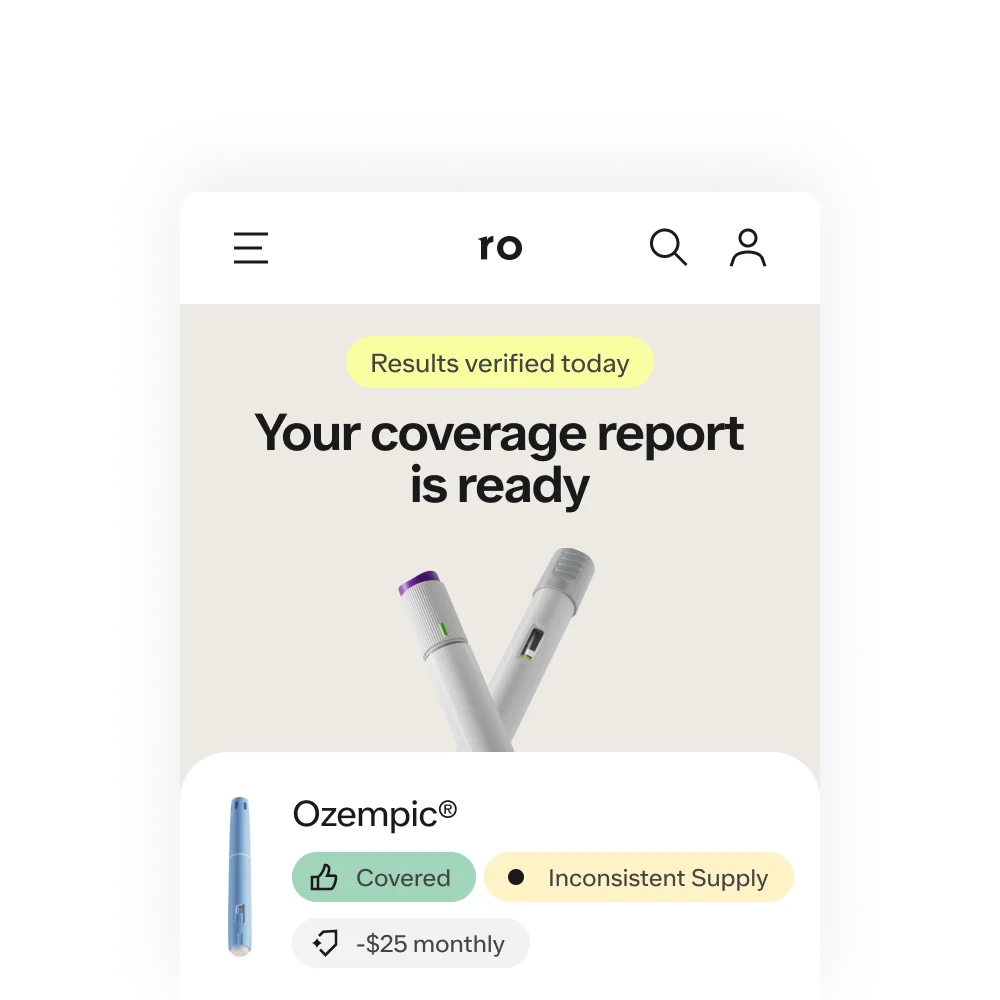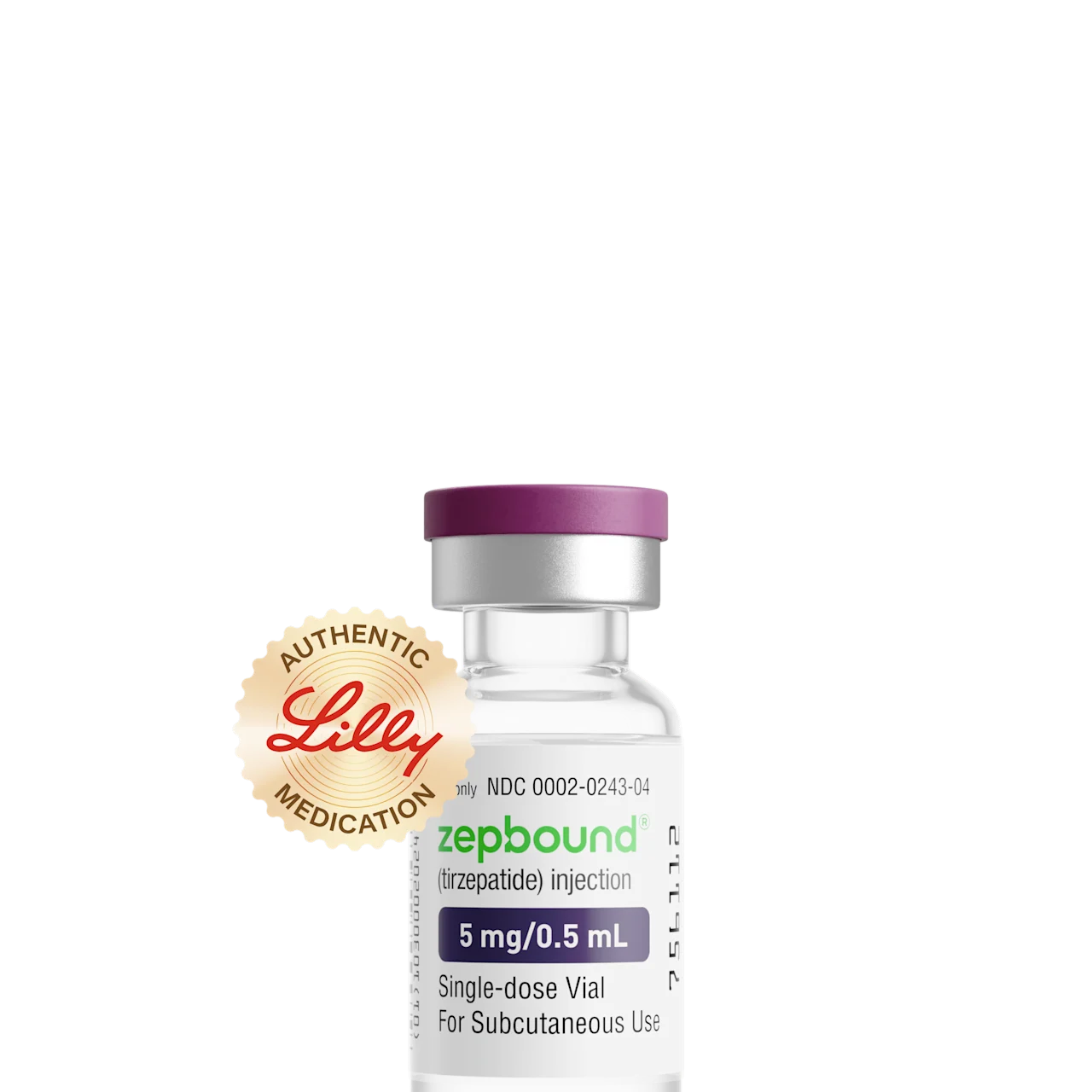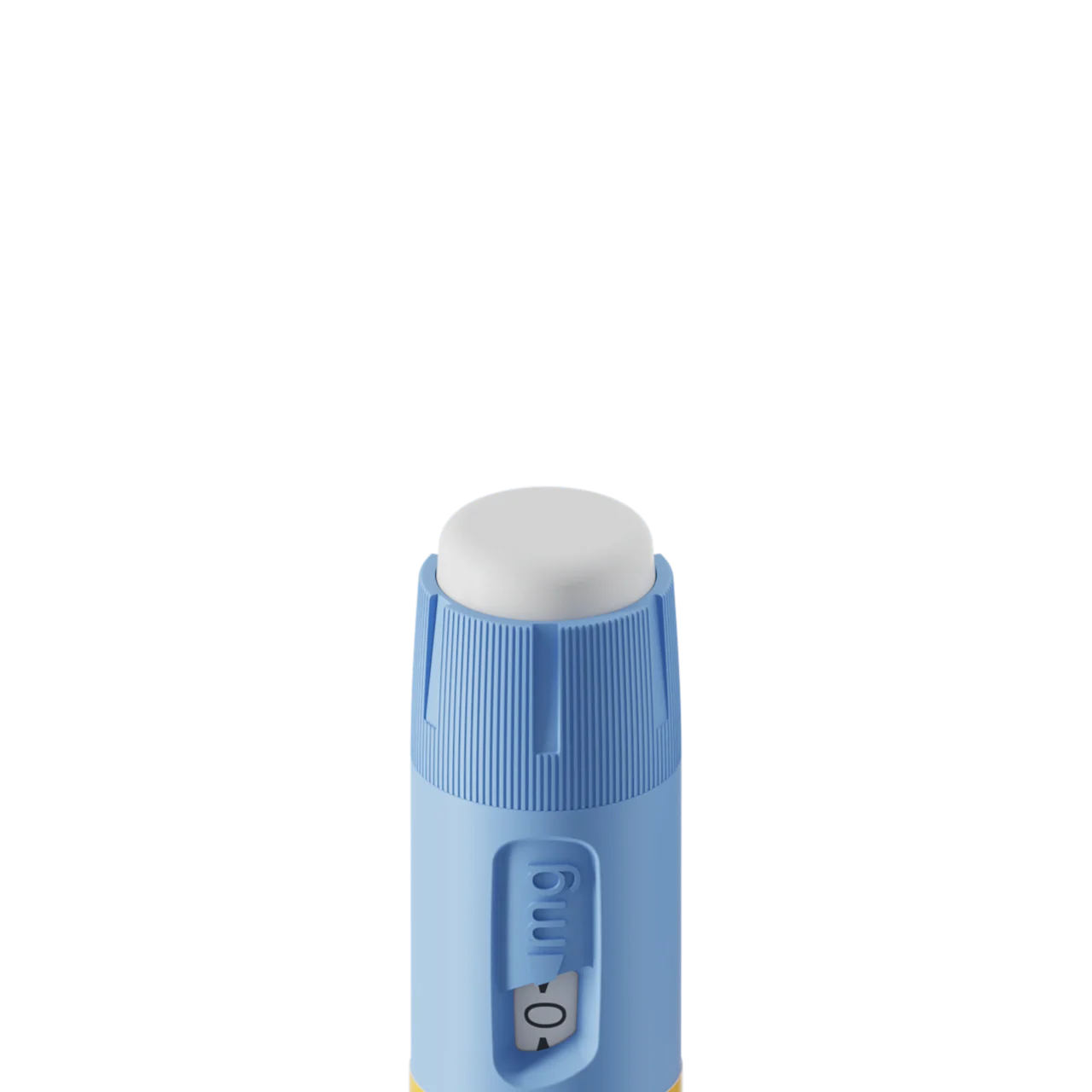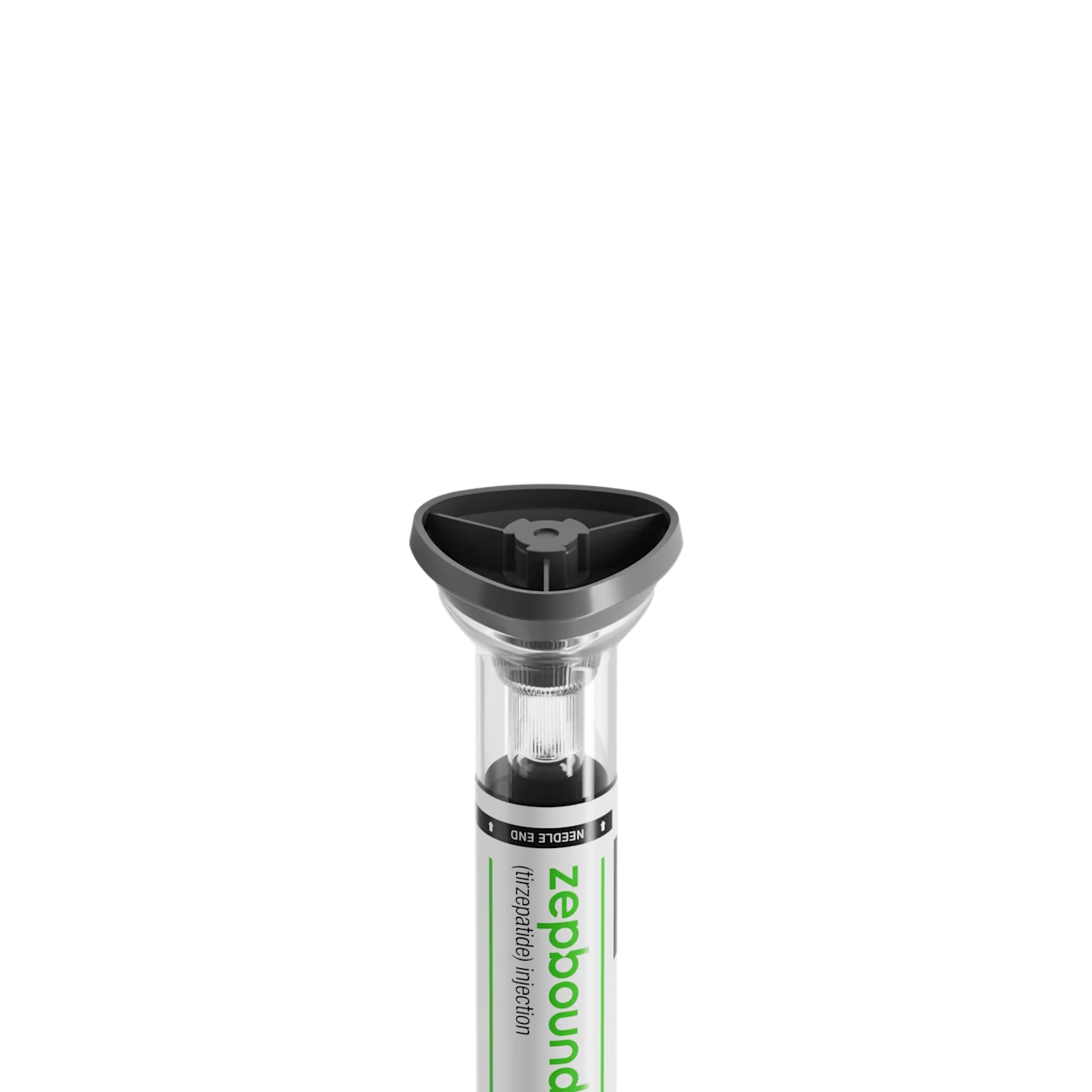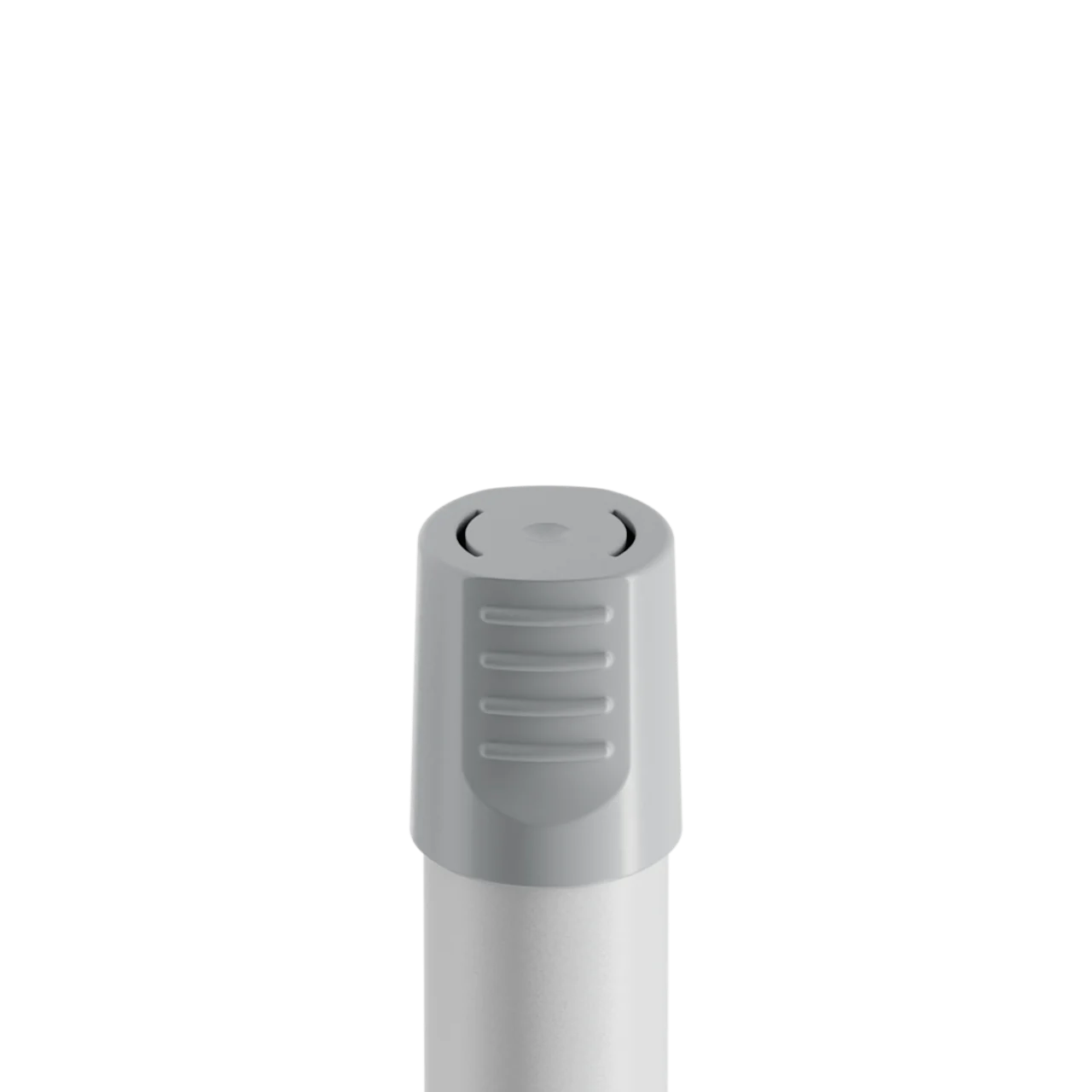Key takeaways
“Ozempic face” is a colloquial term used to describe facial changes that can occur after weight loss with Ozempic or other GLP-1 medications.
Symptoms may include sagging skin, a hollow or “sunken” look to the face, and fine lines or wrinkles.
Facial changes are typically the result of rapid or significant weight loss and are not actually caused by Ozempic or other weight loss medications.
Some skincare products, diet and lifestyle interventions, or cosmetic procedures can help minimize or reverse symptoms.
Here's what we'll cover
Key takeaways
“Ozempic face” is a colloquial term used to describe facial changes that can occur after weight loss with Ozempic or other GLP-1 medications.
Symptoms may include sagging skin, a hollow or “sunken” look to the face, and fine lines or wrinkles.
Facial changes are typically the result of rapid or significant weight loss and are not actually caused by Ozempic or other weight loss medications.
Some skincare products, diet and lifestyle interventions, or cosmetic procedures can help minimize or reverse symptoms.
If you’ve spent any time on social media lately, you’ve likely heard about "Ozempic face." But, what is it, exactly?
Ozempic face describes the wrinkling, sagging, and general loss of volume in the face that can occur with significant weight loss—with or without using Ozempic. So, why is it called Ozempic face, and is there anything you can do to prevent it when losing weight?
Read on to learn more about what Ozempic face is, what causes it, and how you can avoid it, from preventive measures to cosmetic treatments.
What is Ozempic face?
The term “Ozempic face” refers to facial changes such as sagging skin and more pronounced signs of aging due to facial fat loss that can happen when people lose a lot of weight—such as the significant weight loss that can happen with Ozempic and other weight lossmedications.
Symptoms might include:
Hollow cheeks and under-eye areas
Increased visibility of lines and wrinkles
Sagging or loose skin around the jawline and neck
Increased visibility of facial bones
Changes in the size of facial features such as the lips, cheeks, and chin
New York City dermatologist Dr. Paul Jarrod Frank was the first to use the phrase after noticing a pattern among his patients using weight loss medications.
Rx weight loss with Ro
Get access to prescription weight loss medication online
What is Ozempic?
Ozempic (semaglutide) is an injectable medication that belongs to a class of drugs called glucagon-like peptide-1 receptor agonists, or GLP-1s. It’s indicated for blood sugar control in people with type 2 diabetes, but may also be prescribed off-label for weight loss.
What causes Ozempic face?
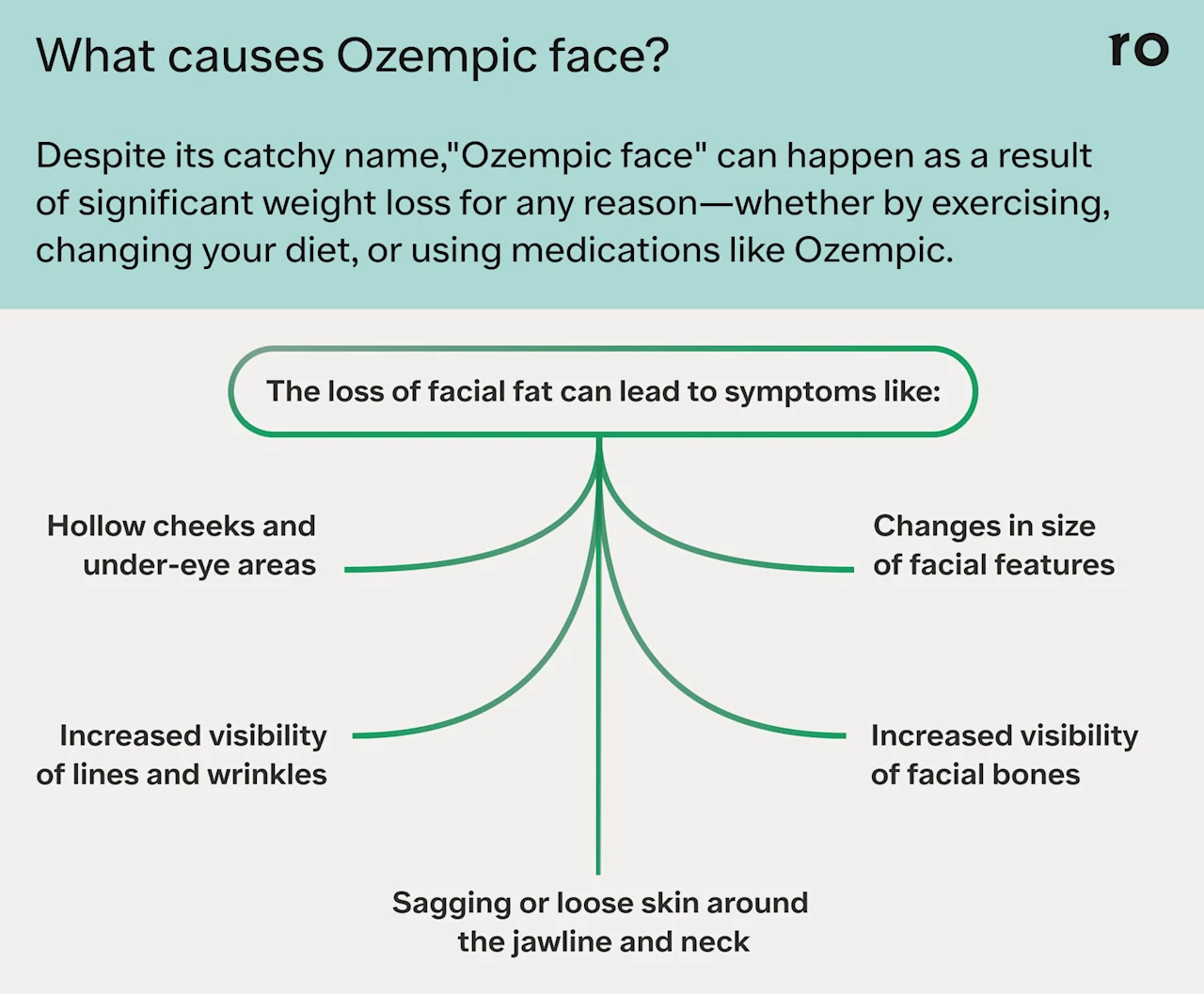
There are a few factors that can cause the facial volume loss associated with Ozempic face.
Rapid weight loss
Despite its catchy name, this phenomenon can happen as a result of significant weight loss for any reason.
People who take Ozempic can experience a lot of weight loss at a faster rate than with traditional dieting and exercise alone. In clinical trials for semaglutide (the active ingredient in Ozempic and Wegovy), participants lost up to 14.9% of their body weight over 68 weeks as compared to 2.4% with placebo.
Our faces naturally have fat pads that provide structure and volume around the cheeks, temples, and jawline. When a person loses weight, these facial fat pads can shrink.
“A lot of fat lies beneath our skin,” shares Dr. Melynda Barnes, Chief Medical Officer at Ro and a triple board-certified Obesity Medicine, Facial Plastic and Reconstructive Surgeon, and Otolaryngologist. “Whether it’s in your gut, your arms, or your face, subcutaneous fat is where most of our fat tissue lives. When you lose body fat, those fat cells shrink and they take up less space. But your skin is used to being stretched over a larger surface area, so now that the fat tissue shrinks, it shrinks faster than the skin can shrink with it, and the skin in the face looks looser and more wrinkled.”
For an analogy, Dr. Barnes suggests thinking of a fitted sheet. “When you spread it over your king-sized bed, it looks nice and smooth. But if you take that same fitted sheet and place it on a twin, it looks wrinkled.”
While people who lose weight with Ozempic or other GLP-1 medications may experience these types of facial changes, Dr. Barnes reiterates that they are not caused by medication, but by the weight loss itself.
“These changes occur in anyone who has lost weight, and it doesn’t matter how they lost the weight — whether by exercising, changing their diet, or using medications like Ozempic,” said Dr. Barnes. “It is not at all specific to Ozempic or even GLP-1 medications in general. It is just a natural thing that happens with weight loss.”
Fat loss and skin elasticity
Elastin, a protein in your skin's dermal layer, acts like a biological “rubber band” that allows the skin to stretch and snap back into place. The skin's ability to bounce back can diminish as you age—natural elastin turnover decreases, so the body produces less of the protein. Environmental factors like UV radiation can also damage existing elastin.
When you lose weight quickly, the skin has less time to adapt to the changes in facial volume.
The combination of quick fat loss and reduced skin elasticity can create the look of Ozempic face as the skin works to retract to new facial contours, which can lead to a hollowed-out appearance.
Collagen loss and skin aging
As you age, your skin naturally produces less collagen. Collagen is an essential protein that connects tissues throughout the body and is a component of bones, muscles, skin, and joints. It also supports skin elasticity and resilience.
After age 40, collagen production decreases by about 1% each year. Environmental factors like sun exposure, smoking, and pollution can further break down collagen, leading to fine lines and wrinkles and making it harder for the skin to adjust to significant weight loss.
Who is at risk for Ozempic face?
“For some people, these effects may happen no matter what…if you lose weight very fast, there is not enough time for your skin to adjust to that smaller volume of fat,” says Dr. Barnes. “[Ozempic face] is much more likely with rapid weight loss, but it can also happen when losing weight slowly.”
Several factors can determine who is most likely to experience symptoms of Ozempic face following weight loss:
Middle-aged and older adults because their skin has naturally lost elasticity over time. “Those over 40 have less elastin and elasticity in their skin, so they may be more likely [to see these effects,]” says Dr. Barnes.
Women may be more likely to experience facial changes since some research suggests they tend to lose more weight than men when taking a GLP-1 due to differences in hormones and metabolism.
How to avoid Ozempic face: 3 tips
“Unfortunately, no preventive measure can completely eliminate the risk of facial volume loss while taking GLP-1 medications,” says board-certified facial plastic surgeon Dr. Mark Murphy.
However, there are different steps you can take that may help prevent the “Ozempic look” after weight loss.
Aim to lose weight gradually
“The best thing you can do is lose weight at a slow, steady pace, so the skin has more time to adjust. This will help minimize the deflated, sagging appearance,” says board-certified plastic surgeon, Dr. Michael Baumholtz.
Some tips to support gradual weight loss may include:
Aim to lose about one-to-two pounds per week. Regardless of which tools you use on your weight loss journey, healthcare providers agree that this is a safe and sustainable weight loss target.
Work with your healthcare provider to find the right Ozempic dosage. They may also suggest adjusting your treatment schedule to achieve a steady weight reduction.
“If your provider is titrating your dose too quickly, you may be more at risk of loose skin in the face,” warns Dr. Barnes. “It is super important that patients be seen by licensed healthcare professionals who have training in patients with obesity and overweight, and know how to prescribe GLP-1s the correct way.”
Support skin health
Start a skincare routine before or as soon as you begin weight loss treatment—it can’t replace lost volume, but it can help maintain skin health and elasticity during weight loss.
A good skincare routine doesn’t have to be complicated. The core components include:
Cleanser: choose a gentle cleanser and wash your face in the morning and at night.
Moisturizer: apply a layer of moisturizer after cleansing—you may want to use different moisturizers for day and night depending on your skin type.
Daily sun protection: use a broad-spectrum sunscreen with at least SPF 30 daily, even on cloudy days.
A dermatologist can also help you develop a skincare routine and suggest products for your specific skin type, age, and concerns. For example, you might want to add additional products or active ingredients—such as retinoids, peptides, hyaluronic acid, and antioxidants such as vitamin C—that can help minimize fine lines, wrinkles, and other signs of facial aging.
Boost collagen and elasticity with lifestyle habits
“Collagen production is essential to skin elasticity and potentially avoiding or reducing excess skin,” says Trista Best, MPH, RDN, LD.
The following tips may help support collagen production:
Consume protein, vitamin C, and healthy fats.
Avoid smoking and sun damage, which can both break down the skin's collagen.
Get regular exercise. Exercise can help improve collagen production in the body, specifically strength training and low-impact cardio.
Aim for seven hours of sleep each night—adequate rest is crucial since this is when your body repairs and regenerates skin cells.
Drink at least eight glasses of water daily to maintain skin hydration from the inside out.
“Staying hydrated, having a balanced diet, and eating plenty of healthy proteins help to support the skin and keep it as healthy as possible” adds Dr. Barnes.
Cosmetic treatments for Ozempic face
Some cosmetic treatments may also help mitigate sagging skin or other facial changes by restoring volume in the face, helping tighten the skin, and minimizing fine lines.
“The most common options depend on the degree of loose skin, if you’re battling loose skin plus or minus wrinkles, and where it all is,” said Dr. Barnes.

Dermal fillers
Dermal fillers are cosmetic injections that may help restore facial volume, improve facial contouring, or soften lines and wrinkles. These fillers work by plumping areas beneath the skin to lift areas that have lost fat.
Pros:
Immediate results
Minimally invasive procedure
Can be dissolved if needed
Natural-looking when done in moderation
Cons:
Results are temporary and require ongoing maintenance
Can be expensive
Possible bruising, swelling, and bleeding at injection sites
Risk of complications such as rash, numbness, lumps under the skin, or skin damage
You may not like the way you look
Skin tightening treatments
“There are other procedures with varying degrees of invasiveness that restore collagen and elastin in the face,” says Dr. Barnes.
She notes that non-surgical options like radiofrequency microneedling (RF) and ultrasound treatments can help tighten loose skin. These technologies heat the deeper layers of skin to stimulate collagen production and improve skin elasticity.
RF microneedling combines tiny needles with heat to create controlled micro-injuries that trigger skin tightening and collagen production. Ultrasound treatments deliver focused energy to precise depths beneath the skin.
Pros:
No downtime required
Gradual, natural-looking results
Can be combined with other treatments
Stimulates natural collagen production
Cons:
May take several months to see results
Multiple sessions are usually needed
Treatments can cause some discomfort
Results are not as dramatic as surgical options
Fat grafting and facial implants
Fat grafting involves harvesting fat from another area of your body (like the abdomen), processing it, and injecting it into areas of facial volume loss. Fat grafting can provide a more permanent solution compared to fillers.
Facial implants are made of medical-grade silicone or other synthetic materials (and sometimes, human tissue) and come in different shapes and sizes to enhance parts of the face. Implants for cheeks, jaws, or chin can be considered in extreme cases where significant structural support is needed.
Pros:
Long-lasting results
Uses your own tissue
Can treat multiple areas at once
More permanent than fillers
Cons:
Requires minor surgery
Longer recovery time than non-invasive options
Some fat may not survive the transfer
Higher cost than temporary options
Myths and misconceptions about Ozempic face
Myth: Facial volume loss is permanent
Weight loss can lead to decreased facial volume, but the skin's ability to adapt varies significantly among individuals. Facial changes may improve once weight stabilizes, and interventions like skincare products and cosmetic treatments can help minimize these changes.
Myth: Ozempic face only affects older adults
Facial volume loss can occur due to rapid weight loss at any age, though older individuals may experience more noticeable changes due to declining collagen and elastin levels. The main factor is not age but rather the rate and amount of weight loss, combined with individual skin elasticity.
Hear from Ro patients
Ro members taking branded GLP-1 medications were paid for their testimonials.
When to consult a doctor
Consider talking to a dermatologist or other healthcare provider if:
Facial changes are causing you significant distress
You notice severe skin looseness
You're interested in preventive measures or cosmetic treatment options
Choose providers with experience in treating weight-loss-related facial aging. Dermatologists typically handle non-surgical treatments. Cosmetic surgeons may be appropriate for surgical options. The best treatment plan will be personalized to your specific needs, goals, and budget.
Bottom line
Facial volume loss can be a common but manageable side effect of rapid weight loss.
Preventive strategies like gradual weight loss, following a skincare routine, and adequate sleep can help boost collagen and minimize facial changes during weight loss.
Non-invasive cosmetic treatments such as dermal fillers or ultrasound therapy can help restore facial volume.
The phenomenon of Ozempic face represents a complex relationship between the benefits of weight loss and its possible effects on facial appearance. While facial changes can be concerning, they don't diminish the potential health benefits of weight loss and improved blood sugar control.
Your healthcare provider is a crucial partner on your weight loss journey. Discuss any concerns about facial volume loss early, and ask about preventive measures and treatment options. You may also consider a coordinated approach between your prescribing physician and dermatologist or other cosmetic specialist.
Frequently asked questions (FAQs)
What does Ozempic do to your face?
Ozempic itself doesn't directly affect facial appearance. The rapid weight loss it (and other weight loss medications) can cause may lead to decreased facial fat volume, potentially resulting in a more hollow or aged appearance. The effect is similar to what occurs with any significant weight loss but may be more noticeable due to the speed of weight loss with Ozempic and other GLP-1s.
Can Ozempic face be reversed?
The appearance of facial volume loss may improve once weight stabilizes. Certain cosmetic treatments can also help restore facial volume and improve skin appearance.
What is the biggest side effect of Ozempic?
Ozempic has been thoroughly tested for safety and efficacy and has a good safety profile. That said, it can cause side effects. The most commonly reported side effects of Ozempic are gastrointestinal issues, including:
Nausea
Vomiting
Constipation
Diarrhea
Abdominal pain
What does Ozempic do to your eyes?
Some people report changes around the eye area, typically involving hollowing under the eyes, more pronounced tear troughs, and increased appearance of undereye bags
What does Ozempic face look like?
Common characteristics of Ozempic face may include:
Increased skin sagging, especially around the chin and neck
More pronounced nasolabial folds
A hollow appearance in the cheeks and temples
More visible facial bones
Deeper wrinkles and fine lines
DISCLAIMER
If you have any medical questions or concerns, please talk to your healthcare provider. The articles on Health Guide are underpinned by peer-reviewed research and information drawn from medical societies and governmental agencies. However, they are not a substitute for professional medical advice, diagnosis, or treatment.
Ozempic Important Safety Information: Read more about serious warnings and safety info.
GLP-1 Important Safety Information: Read more about serious warnings and safety info.
Wegovy Important Safety Information: Read more about serious warnings and safety info.
References
Abir, M. H., Mahamud, A. G. M. S. U., Tonny, S. H., et al. (2023). Pharmacological potentials of lycopene against aging and aging-related disorders: A review. Food Science & Nutrition, 11(10), 5701-5735. doi: 10.1002/fsn3.3523. Retrieved from https://pmc.ncbi.nlm.nih.gov/articles/PMC10563689/
Abu-Ghname, A., Perdanasari, A. T., & Reece, E. M. (2019). Principles and Applications of Fat Grafting in Plastic Surgery. Seminars in Plastic Surgery, 33(3), 147–154. doi: 10.1055/s-0039-1693438. Retrieved from https://pmc.ncbi.nlm.nih.gov/articles/PMC6680081/
Carboni, A., Woessner, S., Martini, O., et al. (2024). Natural Weight Loss or "Ozempic Face": Demystifying A Social Media Phenomenon. Journal of Drugs in Dermatology, 23(1), 1367-1368. doi: 10.36849/JDD.7613. Retrieved from https://pubmed.ncbi.nlm.nih.gov/38206146/
DePhillipo, N. N., Aman, Z. S., Kennedy, M. I., et al. (2018). Efficacy of vitamin C supplementation on collagen synthesis and oxidative stress after musculoskeletal injuries: A systematic review. Orthopaedic Journal of Sports Medicine, 6(10), 2325967118804544. doi: 10.1177/2325967118804544. Retrieved from https://pmc.ncbi.nlm.nih.gov/articles/PMC6204628/
Elander, A., Biörserud, C., Staalesen, T., et al. (2019). Aspects of excess skin in obesity, after weight loss, after body contouring surgery, and in a reference population. Surgery for Obesity and Related Diseases, 15(2), 305–311. doi: 10.1016/j.soard.2018.10.032. Retrieved from https://pubmed.ncbi.nlm.nih.gov/30638792/
Guan, L. L., Lim, H. W., & Mohammad, T. F. (2021). Sunscreens and photoaging: a review of current literature. American Journal of Clinical Dermatology, 22(6), 819–828. doi: 10.1007/s40257-021-00632-5. Retrieved from https://www.ncbi.nlm.nih.gov/pmc/articles/PMC8361399/
Jafar, A. B., Jacob, J., Kao, W. K., et al. (2024). Soft tissue facial changes following massive weight loss secondary to medical and surgical bariatric interventions: A systematic review. Aesthetic Surgery Journal Open Forum, 6, ojae069. doi: 10.1093/asjof/ojae069. Retrieved from https://pmc.ncbi.nlm.nih.gov/articles/PMC11427949/
León-López, A., Morales-Peñaloza, A., Martínez-Juárez, V. M., et al. (2019). Hydrolyzed Collagen—Sources and Applications. Molecules, 24(22), 4031. doi: 10.3390/molecules24224031. Retrieved from https://www.mdpi.com/1420-3049/24/22/4031
National Heart, Lung, and Blood Institute. (n.d.). Key recommendations. Retrieved from https://www.nhlbi.nih.gov/health/educational/lose_wt/recommen.htm
Palma, L., Marques, L. T., Bujan, J., et al. (2015). Dietary water affects human skin hydration and biomechanics. Clinical, Cosmetic and Investigational Dermatology, 8, 413–421. doi: 10.2147/CCID.S86822. Retrieved from https://pubmed.ncbi.nlm.nih.gov/26345226/
Rentzeperi, E., Pegiou, S., Koufakis, T., et al. (2022). Sex differences in response to treatment with glucagon-like peptide 1 receptor agonists: Opportunities for a tailored approach to diabetes and obesity care. Journal of Personalized Medicine, 12(3), 454. doi: 10.3390/jpm12030454. Retrieved from https://pmc.ncbi.nlm.nih.gov/articles/PMC8950819/
Verma, S., Butler, J., Borlaug, B. A., et al. (2024). Efficacy of semaglutide by sex in obesity-related heart failure with preserved ejection fraction: STEP-HFpEF trials. Journal of the American College of Cardiology, 84(9), 773-785. doi: 10.1016/j.jacc.2024.06.001. Retrieved from https://pubmed.ncbi.nlm.nih.gov/38913003/
Wilding, J. P. H., Batterham, R. L., Calanna, S.,et al. (2021). Once-Weekly Semaglutide in Adults with Overweight or Obesity. The New England Journal of Medicine, 384(11), 989–1002. doi: 10.1056/NEJMoa2032183. Retrieved from https://pubmed.ncbi.nlm.nih.gov/33567185/


